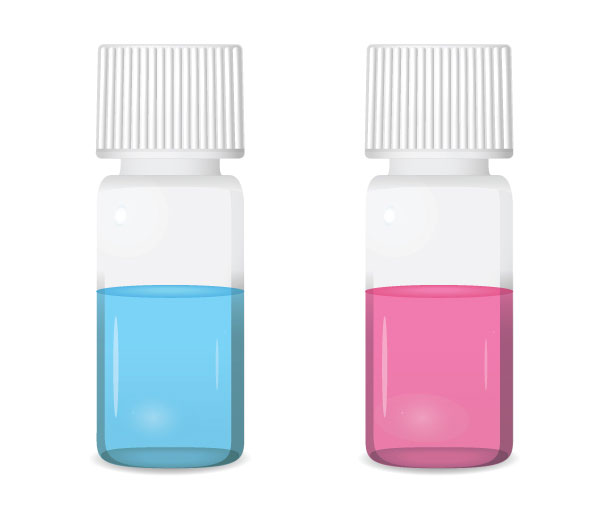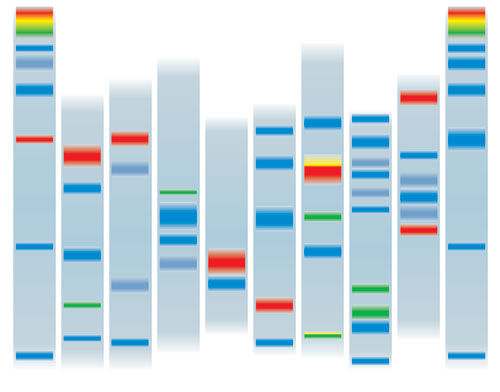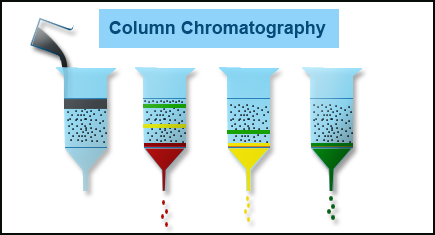How are Gas Chromatography (GC) and High Performance Liquid Chromatography(HPLC) different?


Gas Chromatography is an ideal technique for separation and identification of gases or volatile liquids having low molecular weights. The basis of separation is selective distribution of components present in gaseous phase on the solid adsorbent inside a column or on a thin liquid layer adsorbed on an inert solid support or on the inside wall of a capillary column. The range of separations can be increased by raising the column temperature in an isothermal or programmed manner.
High performance liquid chromatography is based on the same principles as Gas chromatography but is used for the analysis of thermally labile compounds having higher molecular weights. The basis of separation is the distribution of the solute molecules between the moving liquid mobile phase and the stationary phase inside the column
It is very important to have a clear understanding of the differences between these two universally used separation techniques so that you can select the optimum technique for the required separation.
The key differences between the two techniques are highlighted in this article
Mobile phase
The mobile phase used in HPLC is a liquid whereas it is a gas in case of Gas chromatography. Due to the higher density and viscosity of liquids a pump becomes necessary to drive the liquid through the HPLC column and as a result back pressure are high.
Nature of analytes
The samples analyzed on HPLC are generally thermally labile and degrade at higher temperatures whereas in GC the solutes can withstand temperatures up to 400°C and are volatile in nature. Samples for analysis on HPLC are normally liquids or solids dissolved in liquids. GC can handle gases in addition to the liquids and dissolved solids. The molecular weights of GC samples are lower whereas HPLC can be used to analyze high molecular weight compounds covering a range of samples from high molecular weight polymers to large bio molecules.
Column size
Due to higher densities and viscosities of liquids in comparison to gases HPLC columns are generally short and wide. Typical dimensions are 10 or 25 cm with 0.46 mm id. Even larger columns have been used for preparative scale applications. On the other hand significantly longer columns with narrower bores are recommended in GC as gases are less dense and have lower viscosities. Capillary columns can be several meters in length.
Operating temperature
HPLC operations are generally carried out at ambient temperatures due to the thermal labile nature of compounds. Gel permeation columns can be operated at temperatures in the range of 40 to 60°C. On the other hand gas chromatography columns can be heated up to temperatures around 450°C
Operating pressures
Liquids because of their higher densities and viscosities require higher pressures in the range of 5000 – 6000 psi for common analytical separations. UHPLC systems are capable of operation in the range 15,000 – 18,000 psi. The carrier gases in GC columns require lower pressures in the range of 150 – 200 psi
Detectors
Both HPLC and GC use detectors which operate on different principles.
Common HPLC detectors
UV detector – most commonly used detector
Photodiode array detector- For simultaneous multi wavelength determinations
Fluorescence detector – highly sensitive and selective. Often requires derivatization of compounds for sensitivity improvements
Refractive index detector – universal detector with limited sensitivity
Conductivity detector– good selectivity and sensitivity
Common GC detectors
Flame Ionization detector(FID) – most commonly used for organic compounds
Thermal Conductivity detector (TCD) – universal detector. Can be used for inorganic gases and permanent gases as well
Electron Capture detector (ECD) – high sensitivity for halogenated compounds
Nitrogen Phosphorus detector (NPD) – for nitrogen and phosphorus containing compounds
Flame photometric detector (FPD) – for sulphur and organophosphorus compounds such as pesticides and petroleum products
Photoionization detector (PID) – suitable for aromatic and unsaturated compounds in water and sludge samples
Both HPLC and GC have been successfully coupled to mass selective detectors to achieve unmatched high resolutions and sensitivities. Such combinations have yielded breakthroughs in several application areas. The hyphenated techniques will be covered in future articles.





Dear Dr. Bhanot,
I greatly appreciate your efforts in enlightening us with the nuances of analytical chemistry. Your articles give us a paradigm shift and focus in understanding the subject whether it may be theory and/or instrumentation.
Thank you,
Hari, N.
Thanks Hari for your appreciation.Such kind words serve as a motivation in our efforts
thank you dr. Deepak. A very rich topics. But I wondered does the high temperature of GC detector could affect the injected compounds especially volatile oils specimens.
Hi Dr Amina,
Volatile oils and other similar compounds are generally detected by GC using Flame Ionization detector which is a destructive detector which in any case burns up and destroys the injected compounds.However, the more volatile the sample the earlier it will reach the detector after separation in the column and it ts peak response will be seen before the other less volatile specimen components.
nice about hplc and Gc
plz discuse the working bases of detectors and X-rays spectroscopy
please Dr Deepak, what chromatographic technique is ideal for quantitative and qualitative analysis of aromatic halogenated compounds and what technique is also most suitable for determination of components of plant extracts that are required for antimicrobial sensitivity test.
Aromatic halogenated compounds can be analysed using a gas chromatograph with electron capture detector.For plant extracts please specify some compound classes
hello,
Thank you so much for the good lesson.
Am learning a lot from you.
be Blessed
Can you direct me to where I can get GC-MS and HPLC equipment for analysis of ginger essential oil and its constituents in India.
The required analysis can be done in our laboratories but we shall require first the details of your requirements. You can send the details to me on my e-mail id [email protected] and provide me your complete mailing address and contact information. Regards